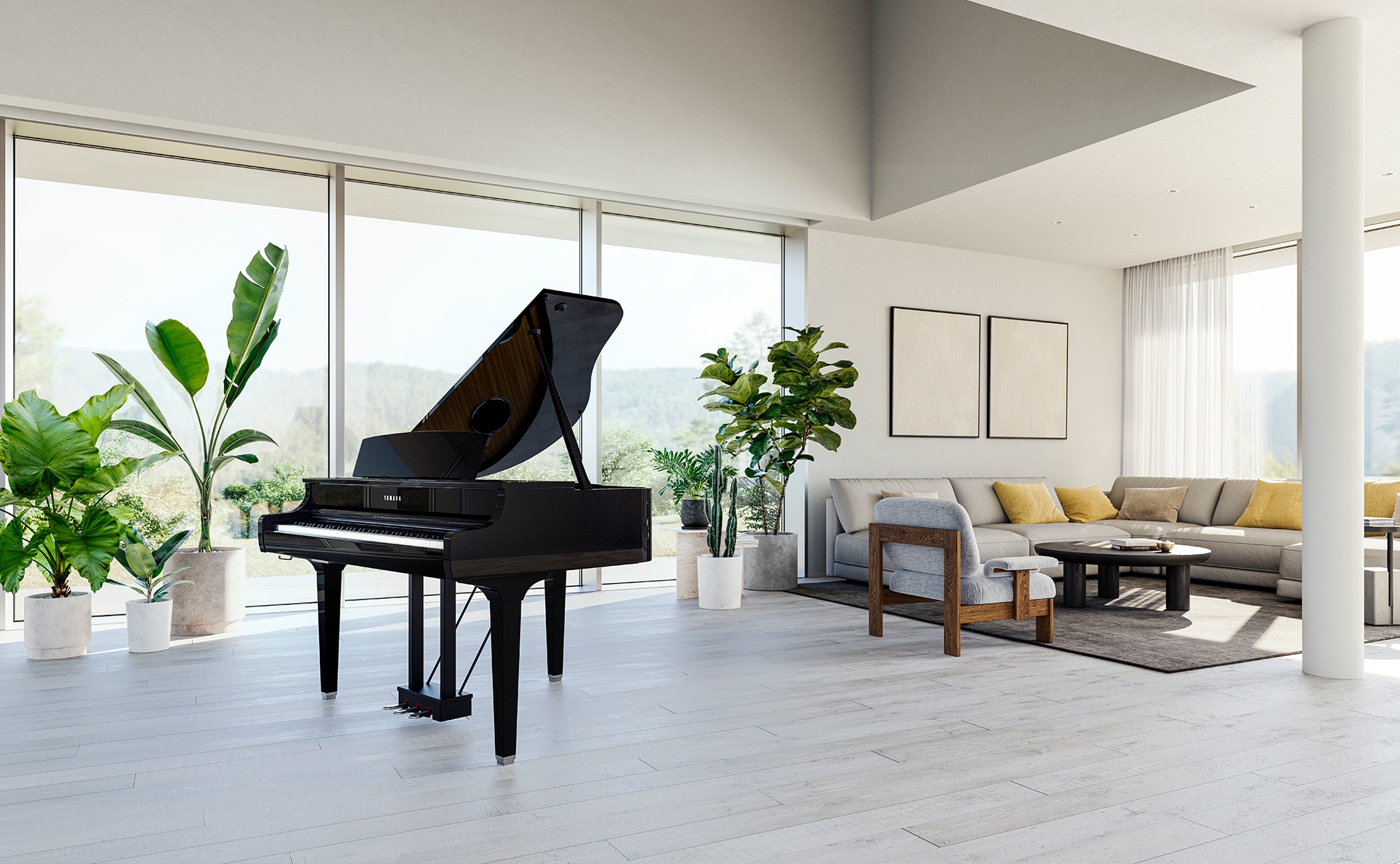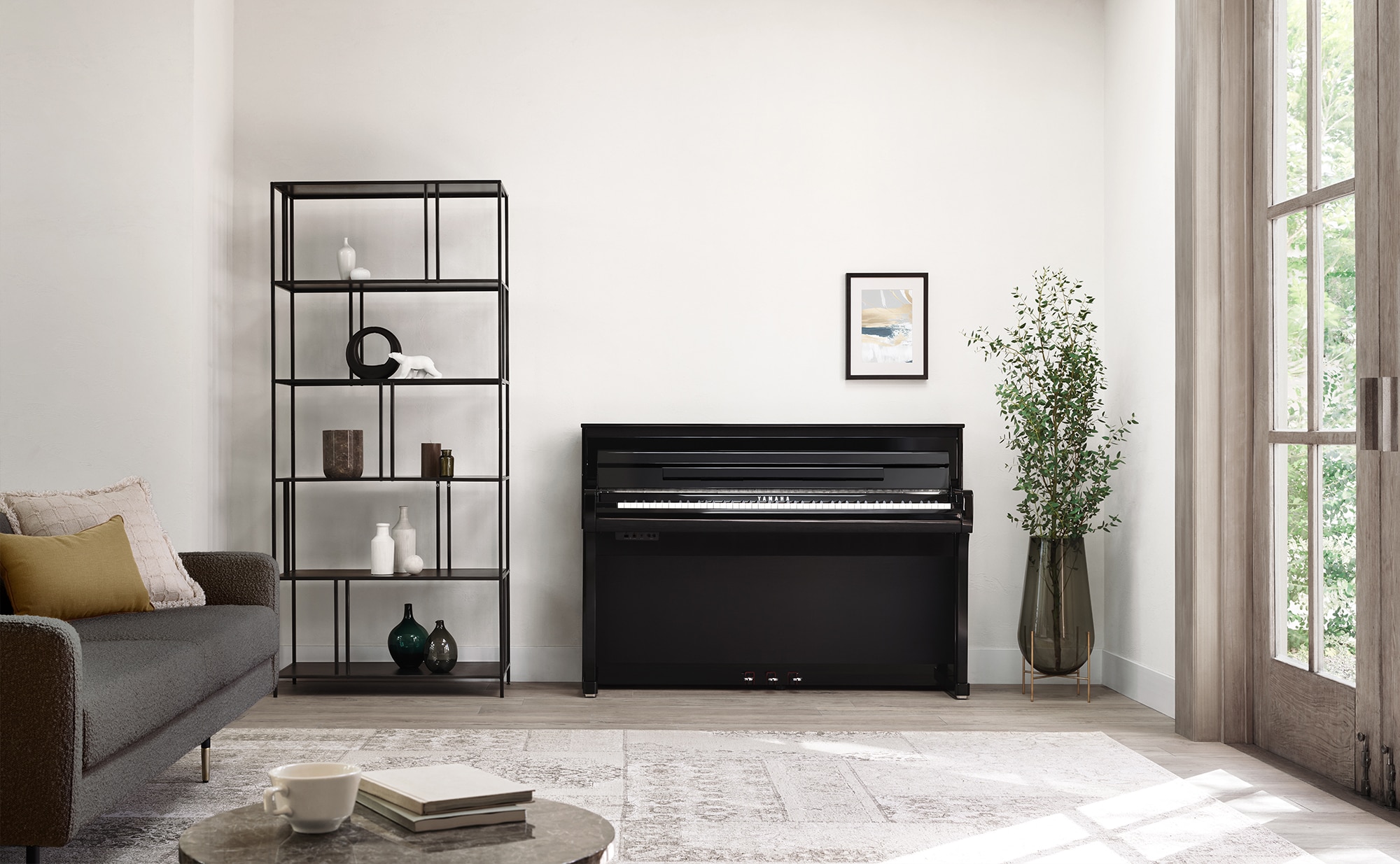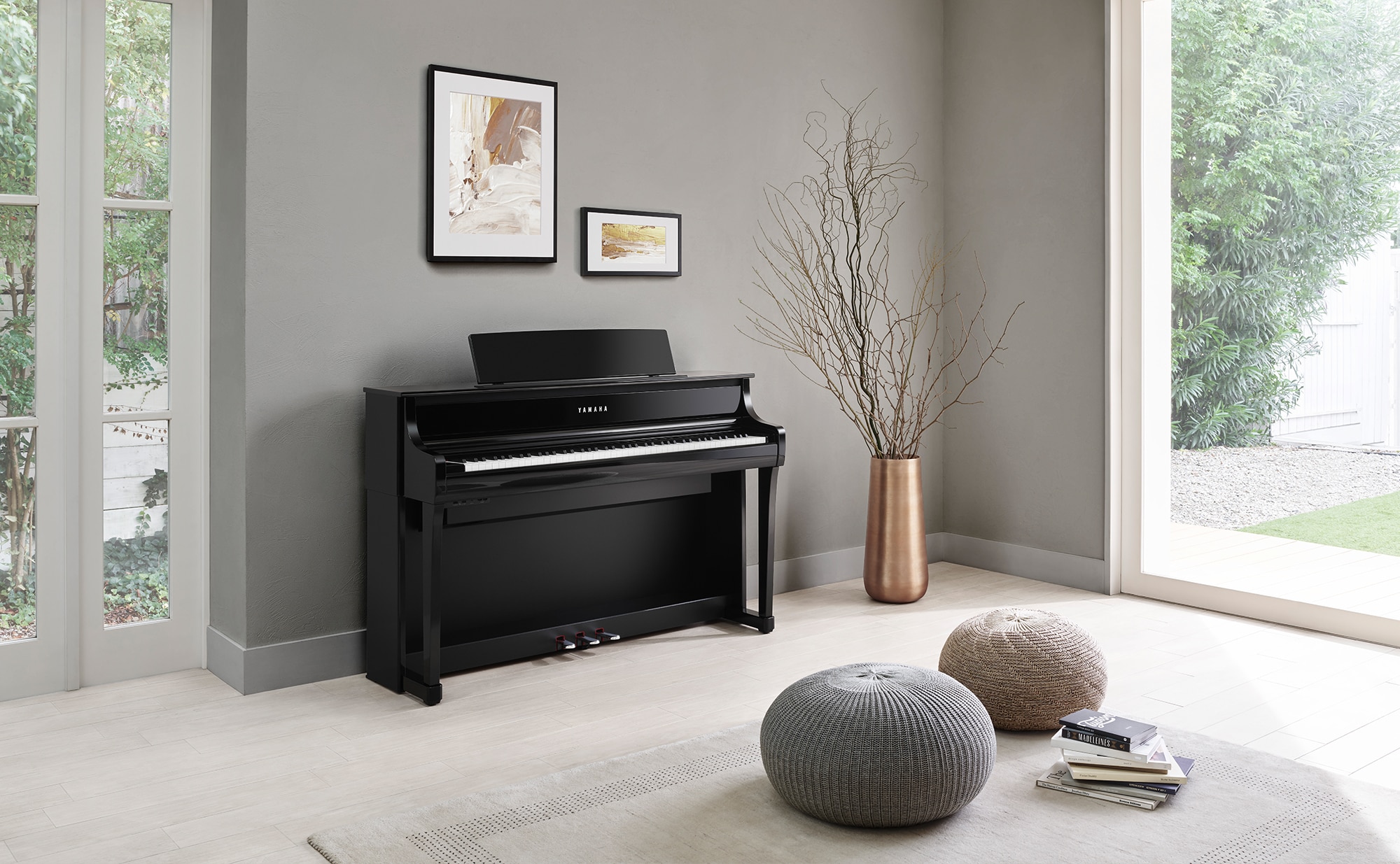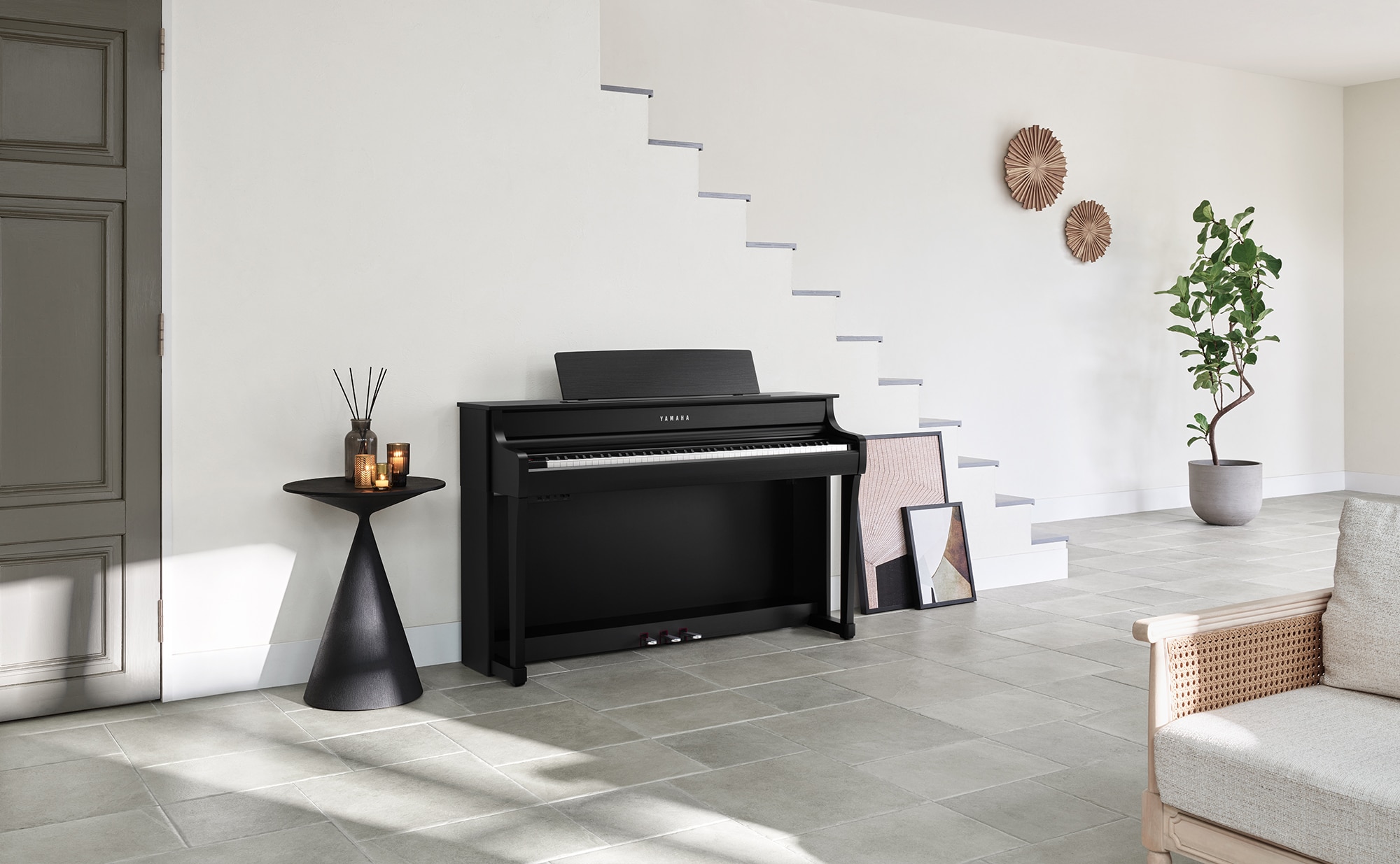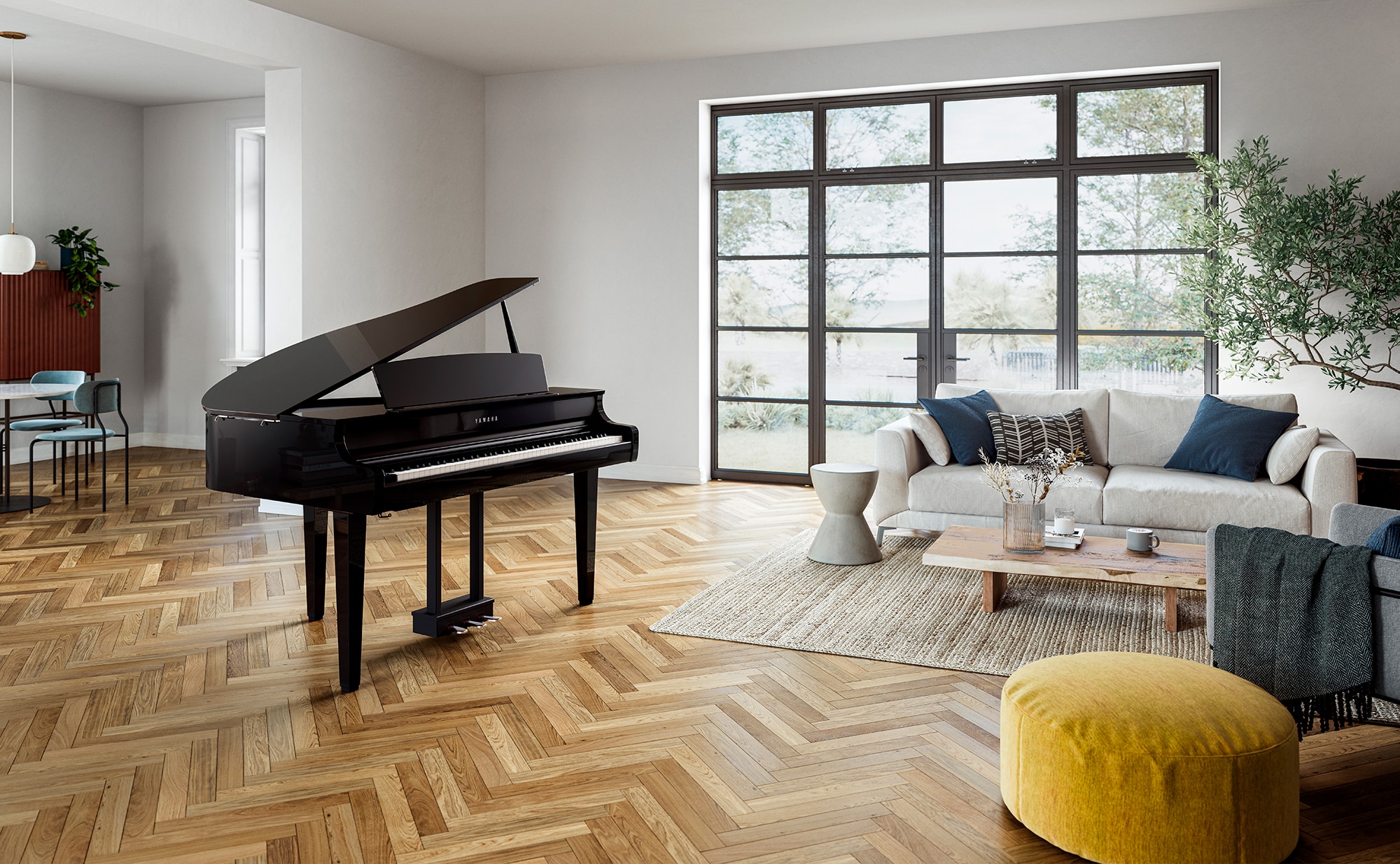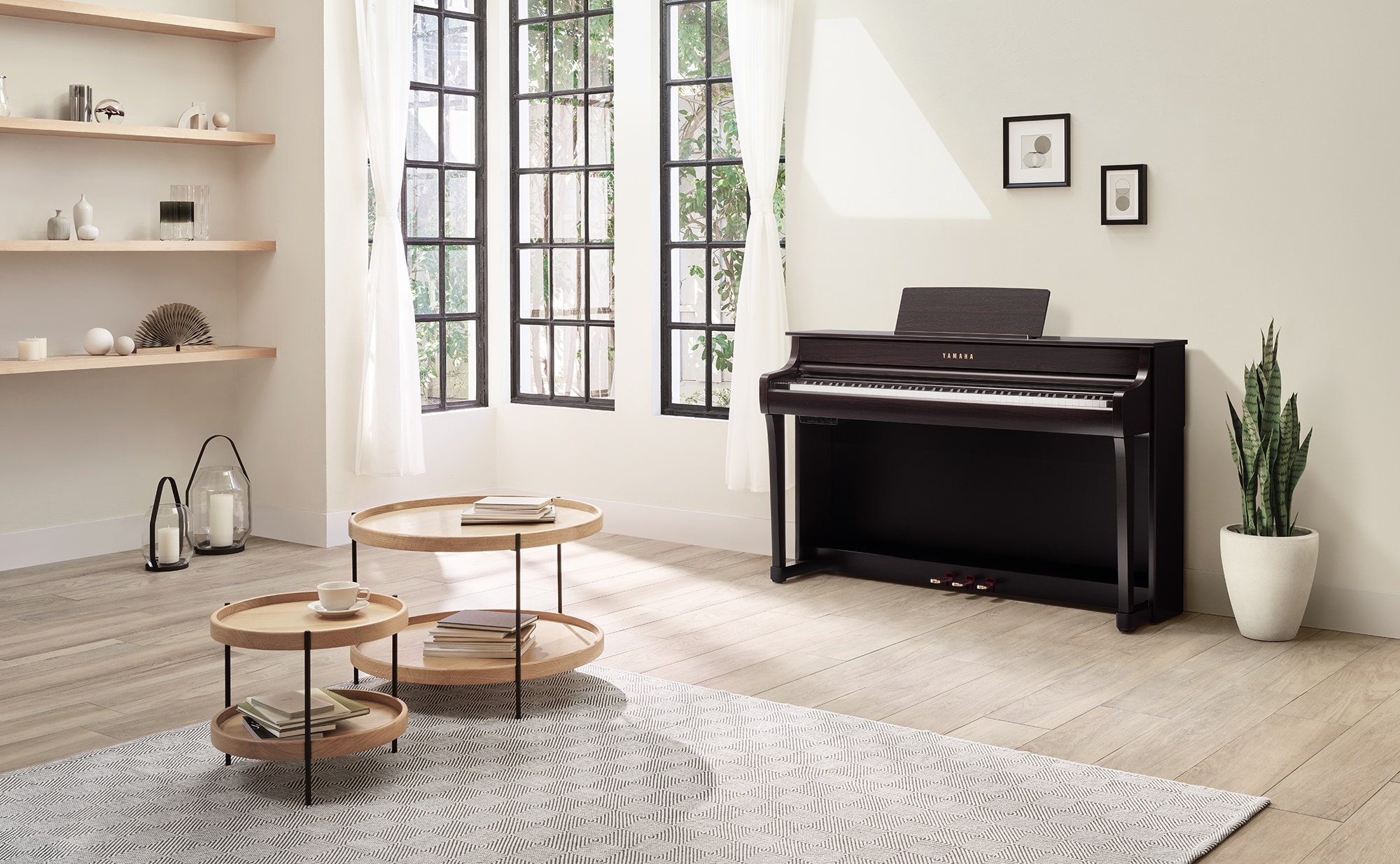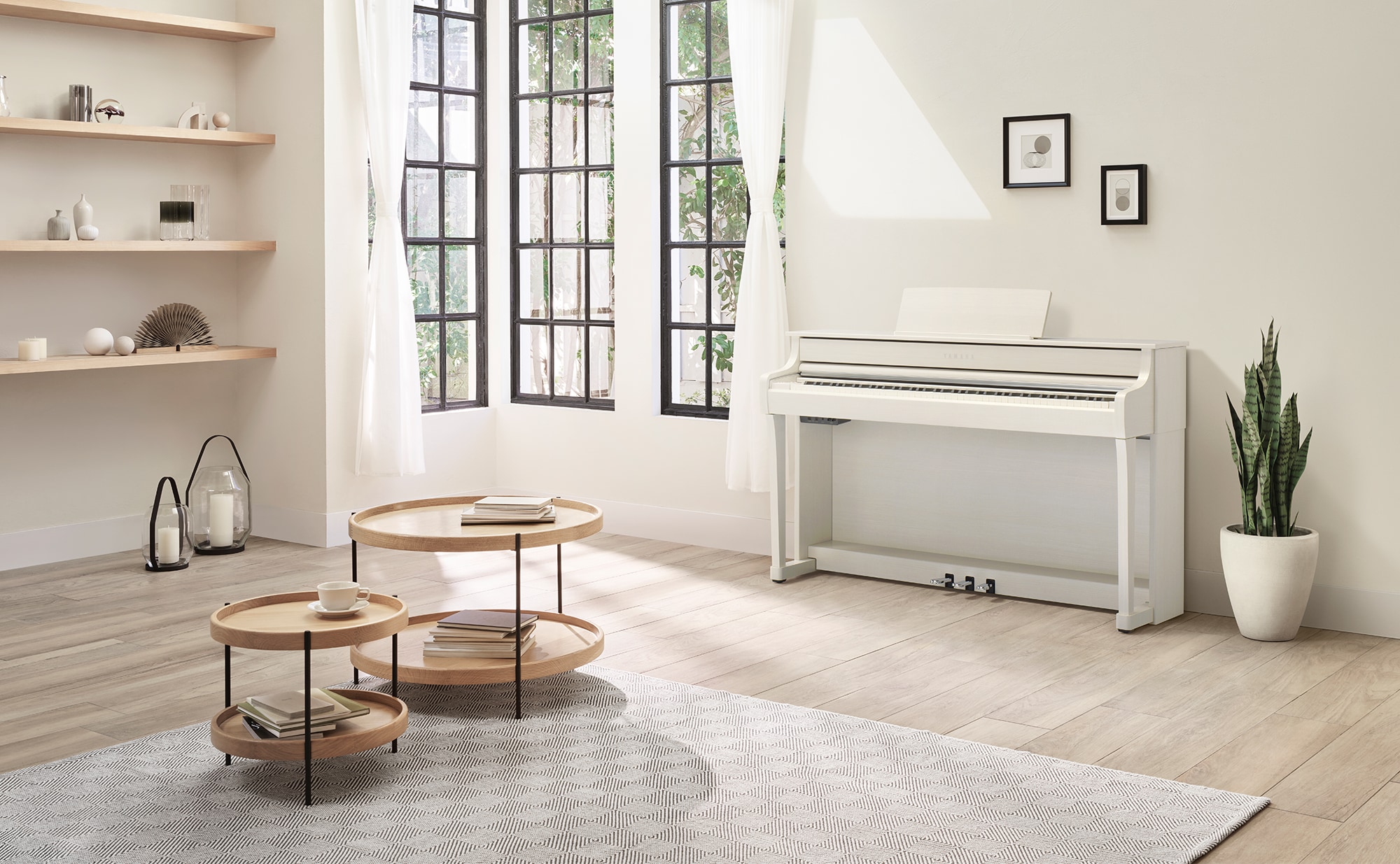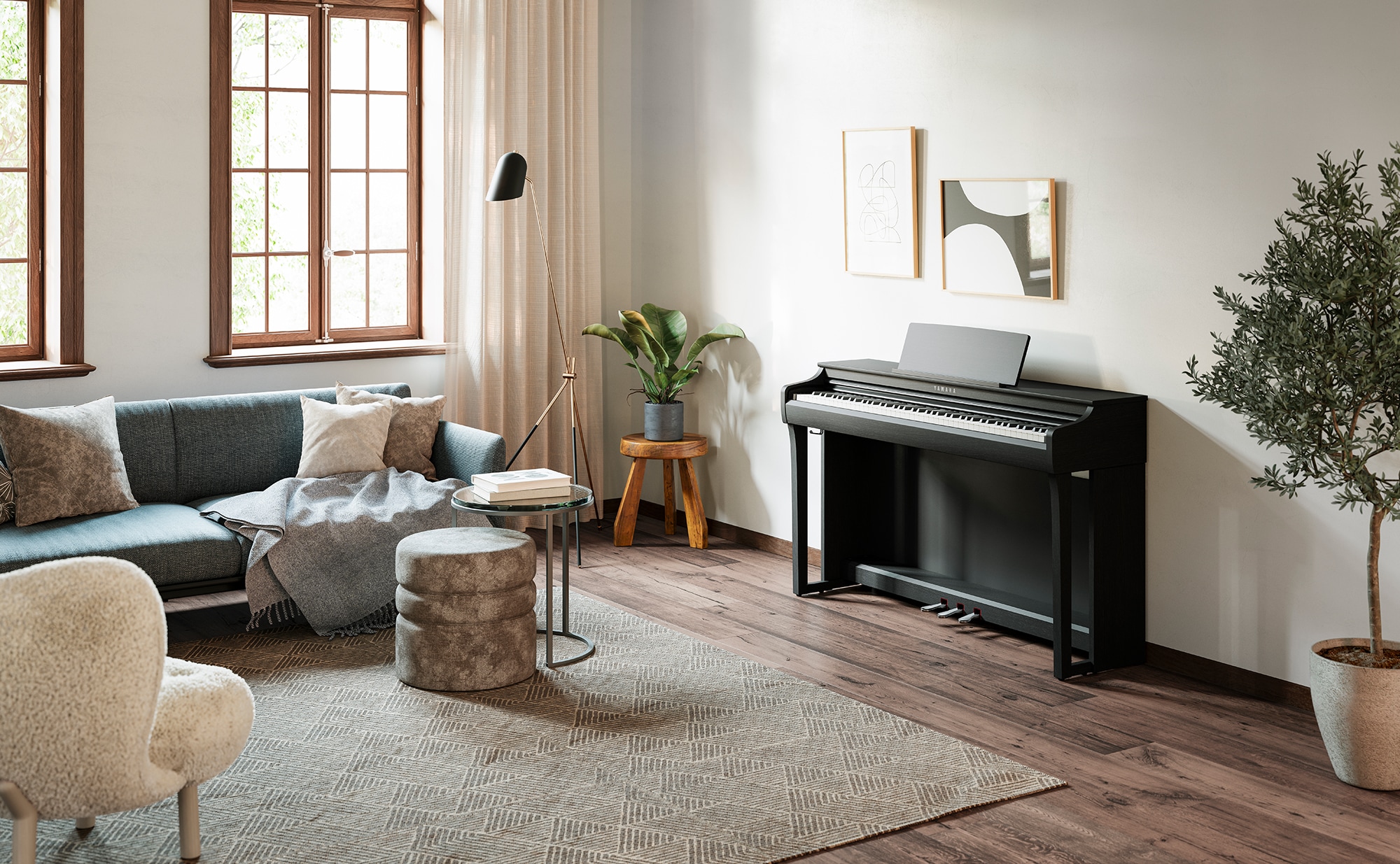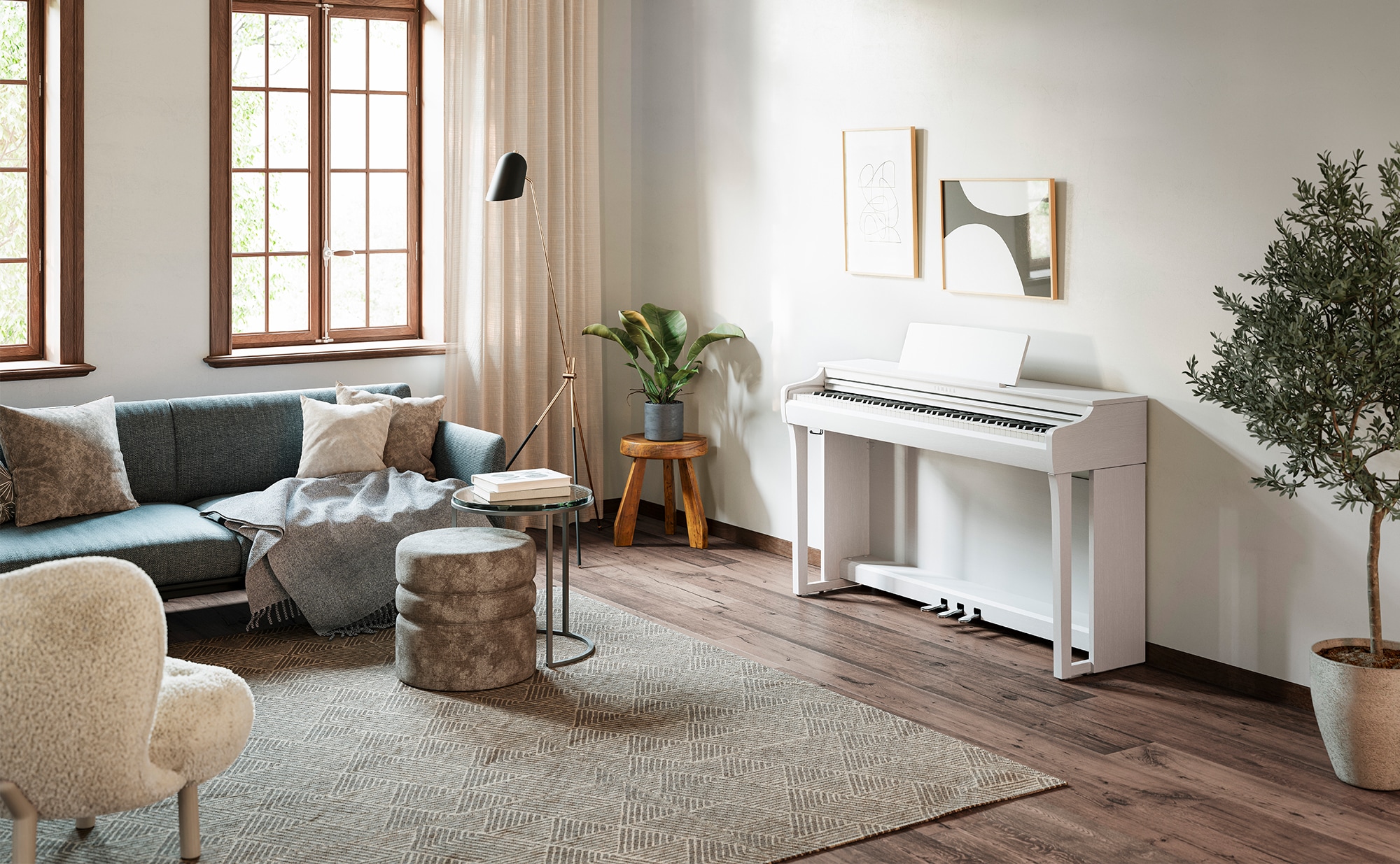OVERVIEW
What Is the Clavinova CLP Series?
The Clavinova CLP Series aims to replicate the sensations and experience of playing an acoustic grand piano on digital instruments by combining the latest digital technology with the craft of acoustic piano-making cultivated over more than 120 years.
Digital Never Felt So Grand
Digital never felt so grand. This phrase captures the identity of the Clavinova CLP Series. The defining features of the CLP Series are astoundingly advanced piano performance and sophistication as a single instrument that is able to accommodate a wide range of musical expression. Our mission is to convey the joy and pleasure of piano playing to more piano players by continuing to push the boundaries and make our digital pianos for the household market as close to grand pianos as possible.
The Joy of Playing Clavinova Pianos
People want to play grand pianos, but cannot because of restrictions at home. The Clavinova CLP Series solves this problem by delivering lush playing experiences similar to grand pianos. CLP Series pianos feature quality that meets the demands of high-level practice and playing and plenty of functions to make practice enjoyable and effective.
DEVELOPMENT PHILOSOPHY
Clavinova Development Philosophy
Here, we introduce the unique development philosophy of replicating the capabilities of grand pianos on a digital piano to the extent possible, passed down through generations of Yamaha developers.
About CLP Design
The Clavinova CLP Series boasts excellent playability along with a refined, authentic design that blends a compact form with modern aesthetics in a manner befitting the instrument that sets the contemporary standard for pianos. At the heart of the Clavinova design concept is the way the player feels when they take their seat in front of a Clavinova piano. Unnecessary elements are removed from the player’s field of view to create a convincingly natural space that feels just like sitting at an acoustic piano. This represents Yamaha’s consideration to players who practice on Clavinova and perform on grand pianos—they are able to take the stage free of tension or worry because everything feels normal, as it should. A Clavinova piano is a part of the player’s everyday life—contemporary accents and color variation are available to mesh with any interior design or lifestyle.
TESTIMONIALS
User Testimonials for CLP Series Pianos
Here is what users of CLP-800 Series pianos have to say about their purchases.
· The touch of the keyboard and the feel of the pedals are remarkably close to that of a grand piano. The sound quality is excellent, and you can enjoy a range of functions that only a digital piano can offer. (CLP-885)
· Even if you wear headphones when you're playing, it feels like you're not wearing them at all. The instrument's ability to express the most delicate nuances lets you concentrate on interpreting a piece. (CLP-885)
· As a classical pianist, touch is very important to me, and the CLP-875 is easy to play—it's much better than I expected. I look forward to playing every time I sit down in front of it. (CLP-875)
· I'm a musician and so I'm well acquainted with the feel of an acoustic piano keyboard. The keys of the CLP-845 are made of wood and offer a very authentic playing feel, and the instrument has an incredibly realistic sound. I was also impressed by how it simulates string resonance. (CLP-845)
· This is a wonderful basic piano. I have owned a Clavinova before, but I think the piano sound and feel have improved significantly in this model. I don't think anything can compare to a Clavinova. (CLP-835)
· I was impressed at the beautiful sound and excellent reverberation the instrument provides despite being a digital piano; it's perfect for a child to practice with. The large number of famous pieces and lesson songs included is another good point. It doesn't take up much space, and I was able to put it in my living room. (CLP-825)
· I really like the beautiful design. It's wonderfully playable, and the sound, touch, and versatility are all excellent. (CLP-895GP)
FEATURES
About CLP-800 Series
Turn your living room into a performance venue for a top-flight grand piano
With resonance and tone variation similar to a grand piano, the CLP-800 Series allows you to enjoy a wide range of expression. The keyboard and pedals faithfully respond to the player’s touch to provide a feel close to that of a grand piano. A full lineup of colors ensures that your piano will match your interior design.
We recommend this model for:
· People who focus on sound quality and elements of feel such as touch and pedal response
· People who seek a simple piano
· Players of all skill levels
Piano Quality
Countless features designed to replicate the subtlest nuances of grand pianos bring the true pleasure of grand piano playing to a wider audience.
-
-
-
-
Keys and pedals that allow players to create the intended sound with the same feel as a grand piano

-
Useful Digital Features
Enjoy a wealth of comfortable and convenient features only possible with a digital piano, including recording, linking with apps, and the pleasing headphone sound provided by binaural sampling.
Supporting Technologies
Introducing Yamaha’s proprietary technologies for creating rich sound and outstanding responsiveness on a single, harmonically balanced instrument.
Photo gallery
From top left
- CLP-895GP Polished Ebony
- CLP-885 Polished Ebony
- CLP-875 Polished Ebony
- CLP-845 Black
- CLP-865GP Polished Ebony
- CLP-835 Dark Rosewood
- CLP-835 White Birch
- CLP-825 Black
- CLP-825 White
Comparison chart
LINEUP
* Specifications are subject to change without notice. The colors and finishes shown may vary from those on the actual products.

























